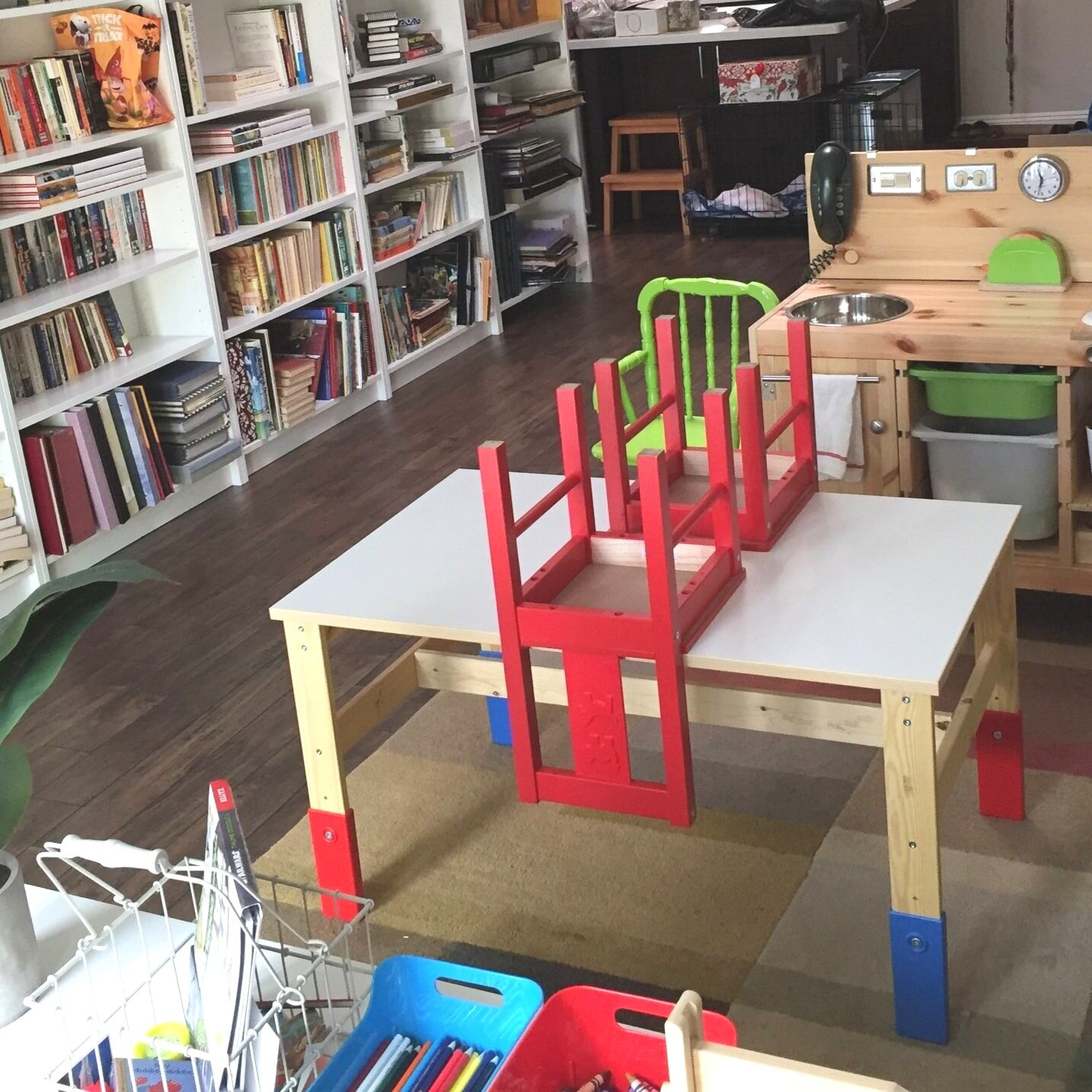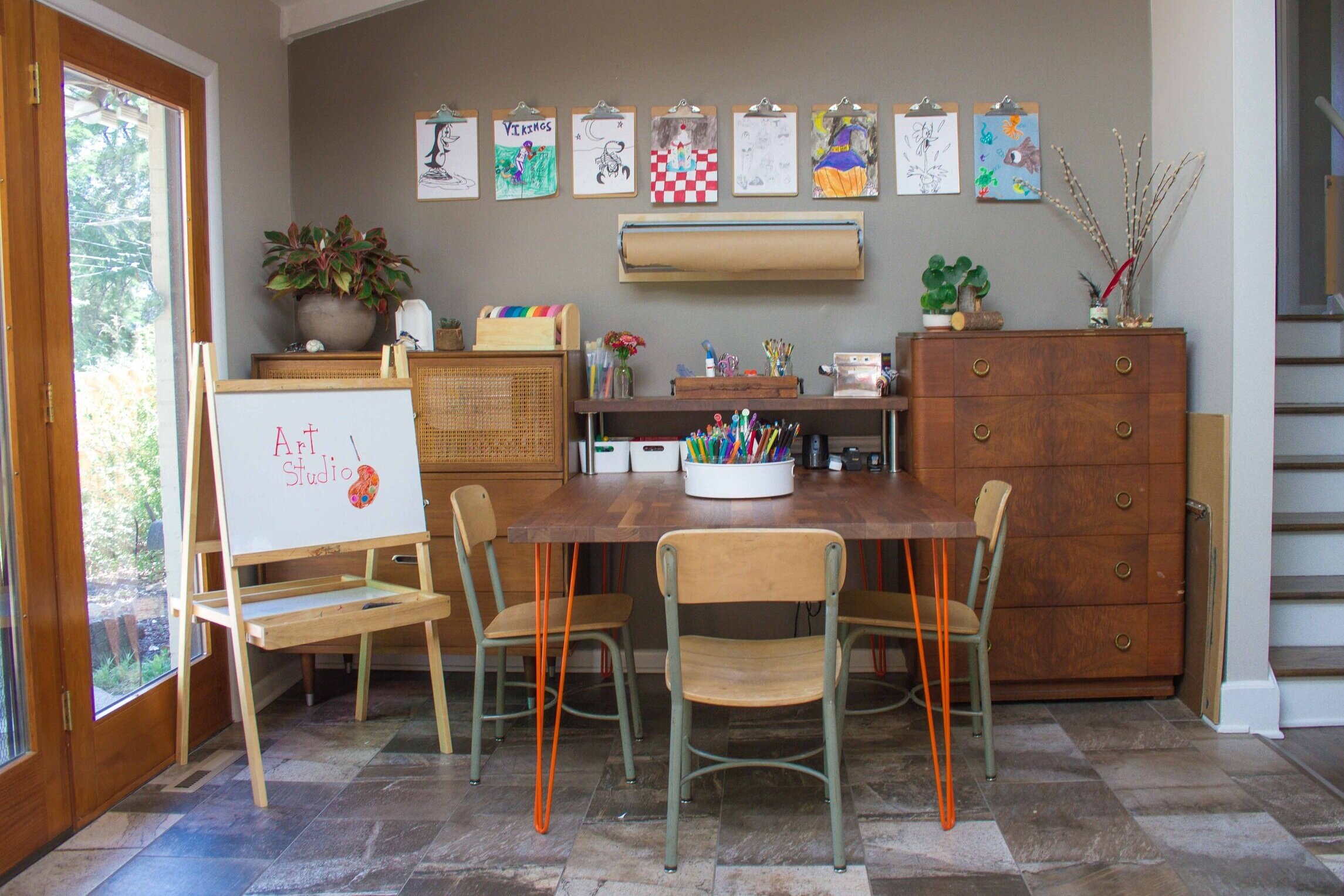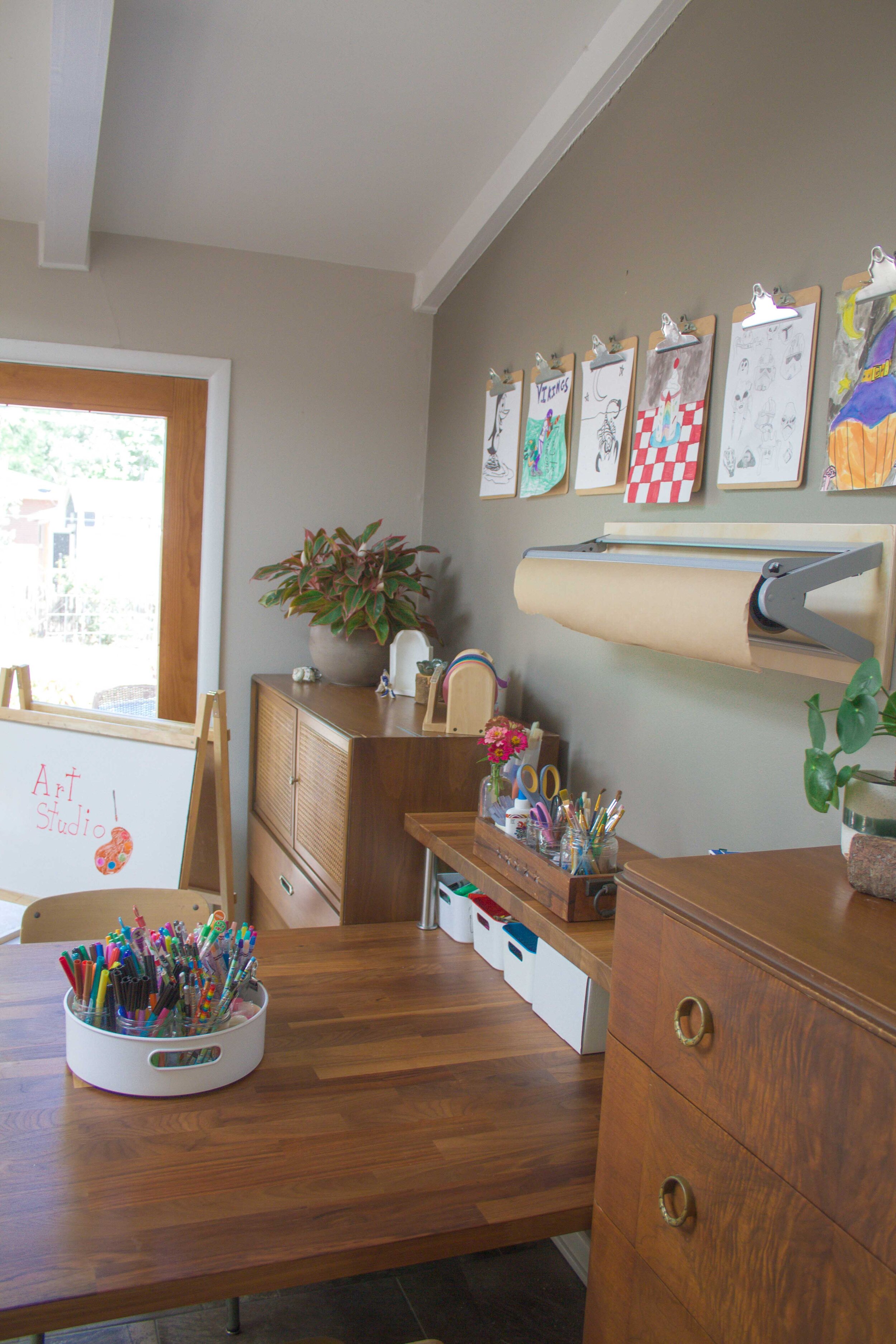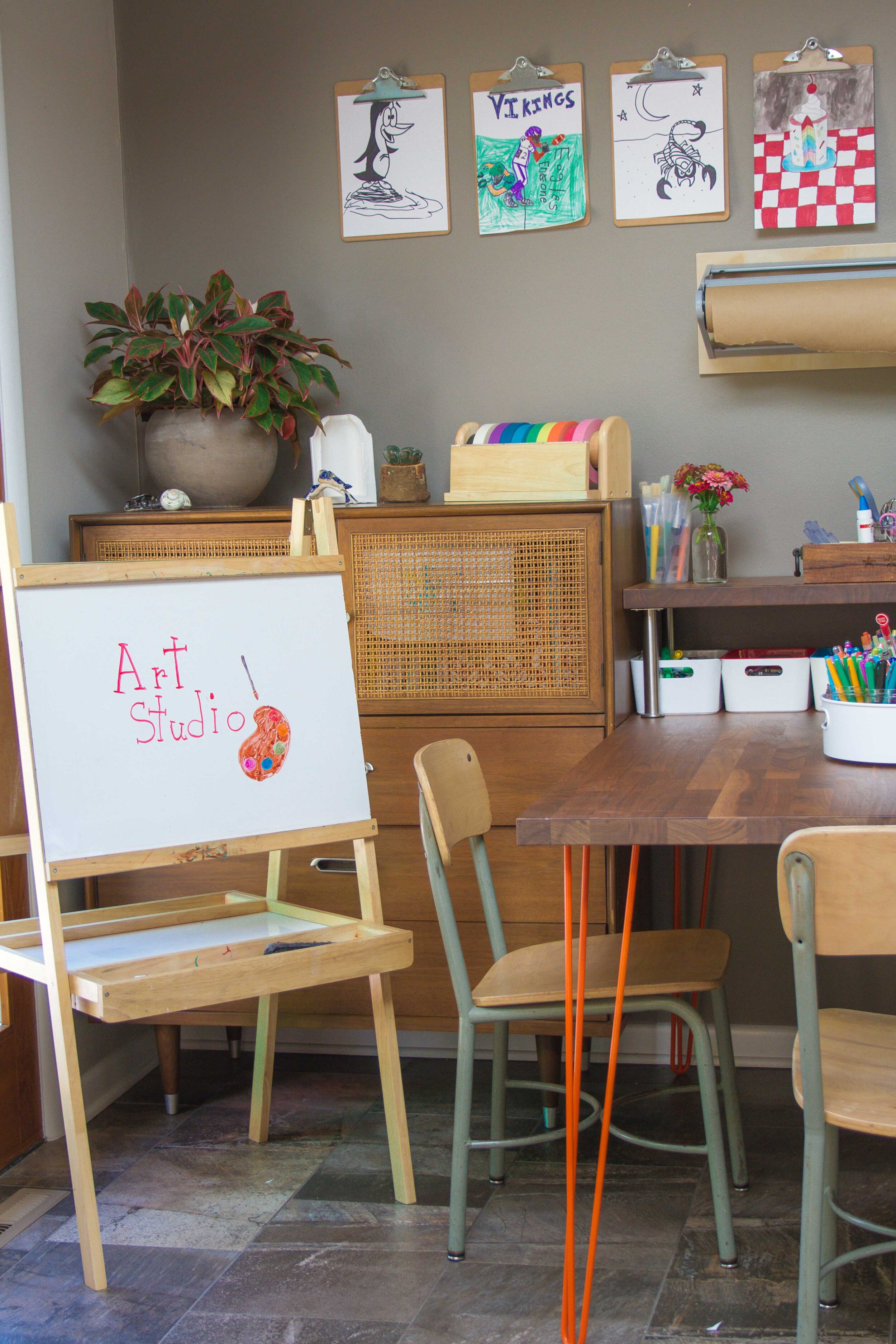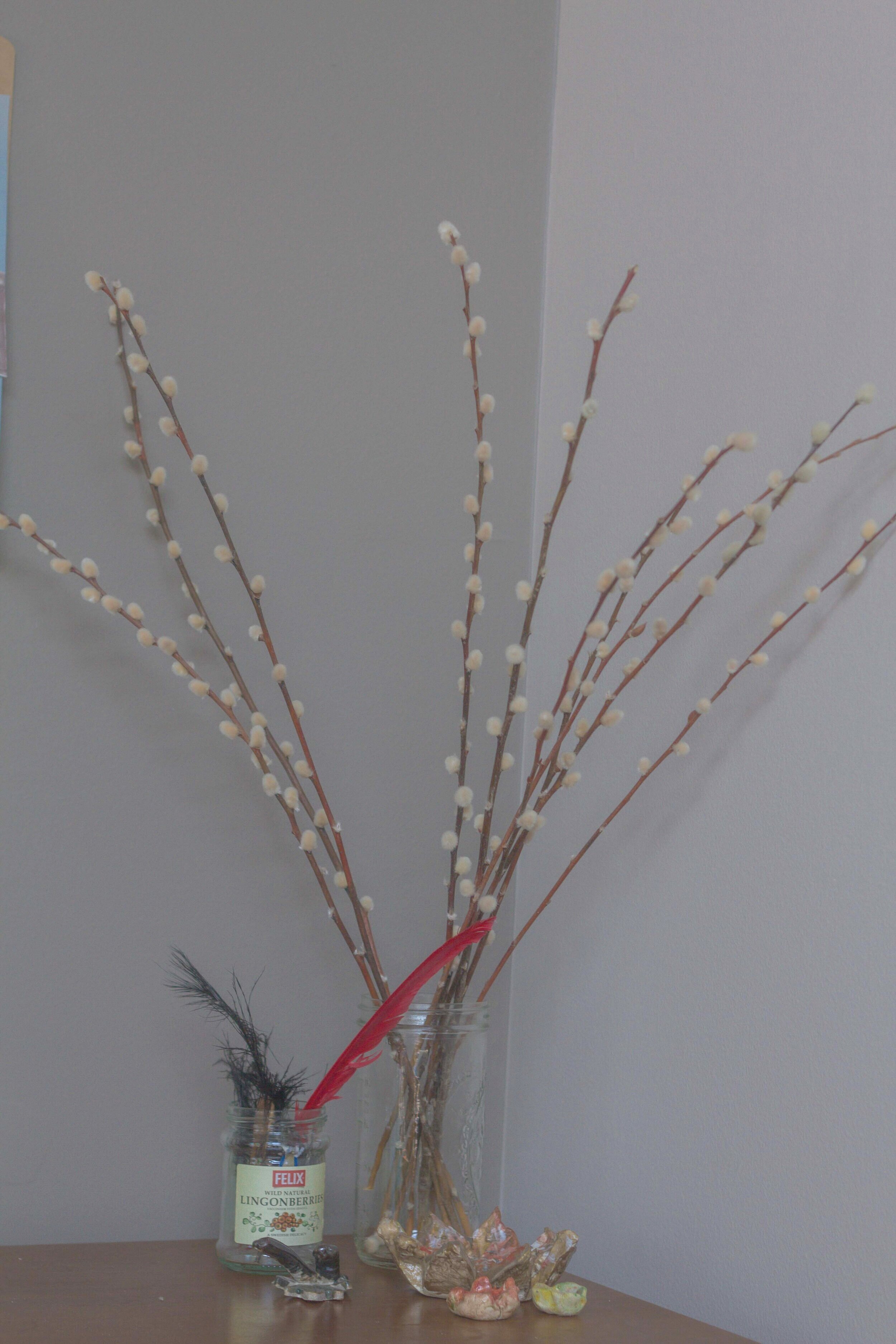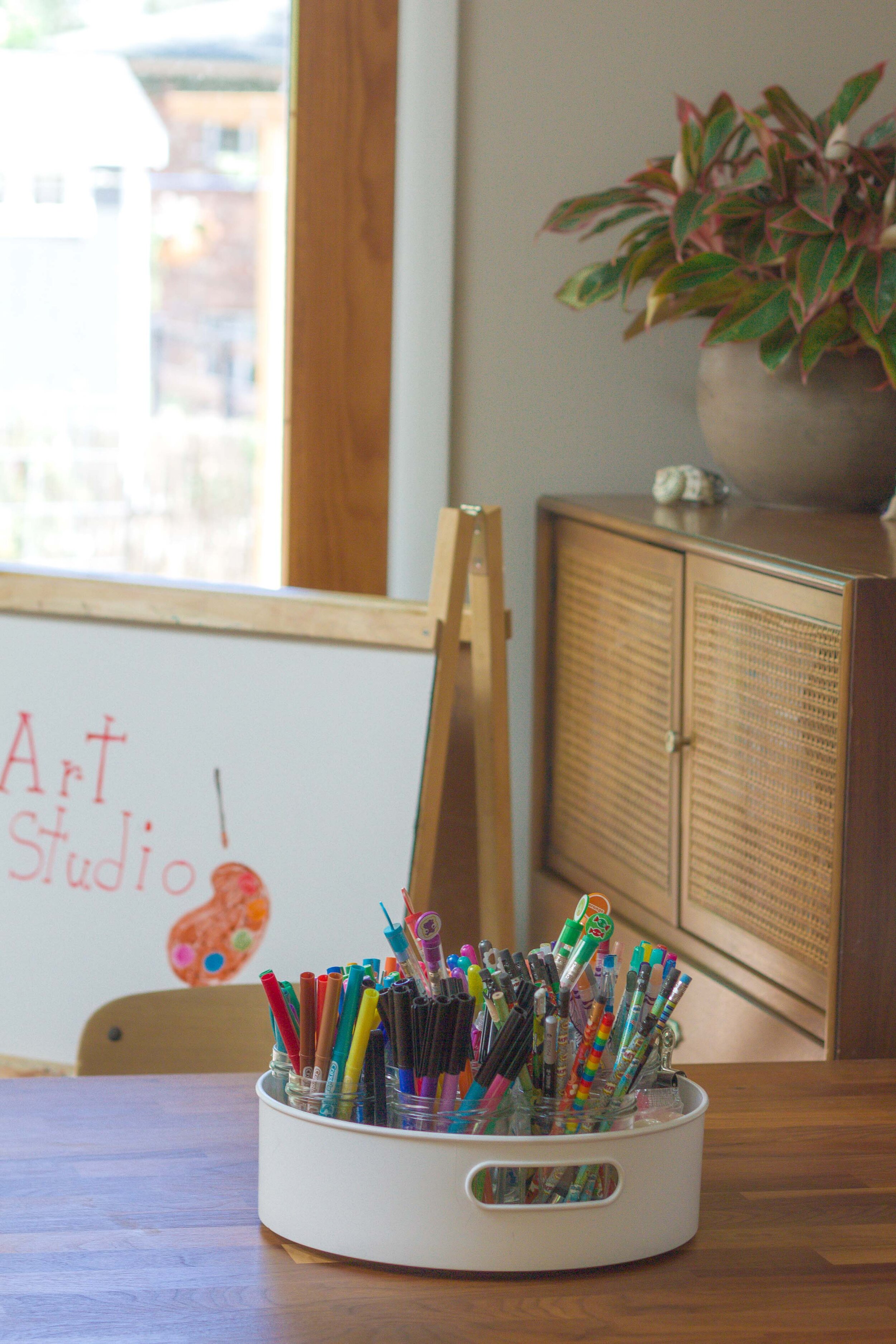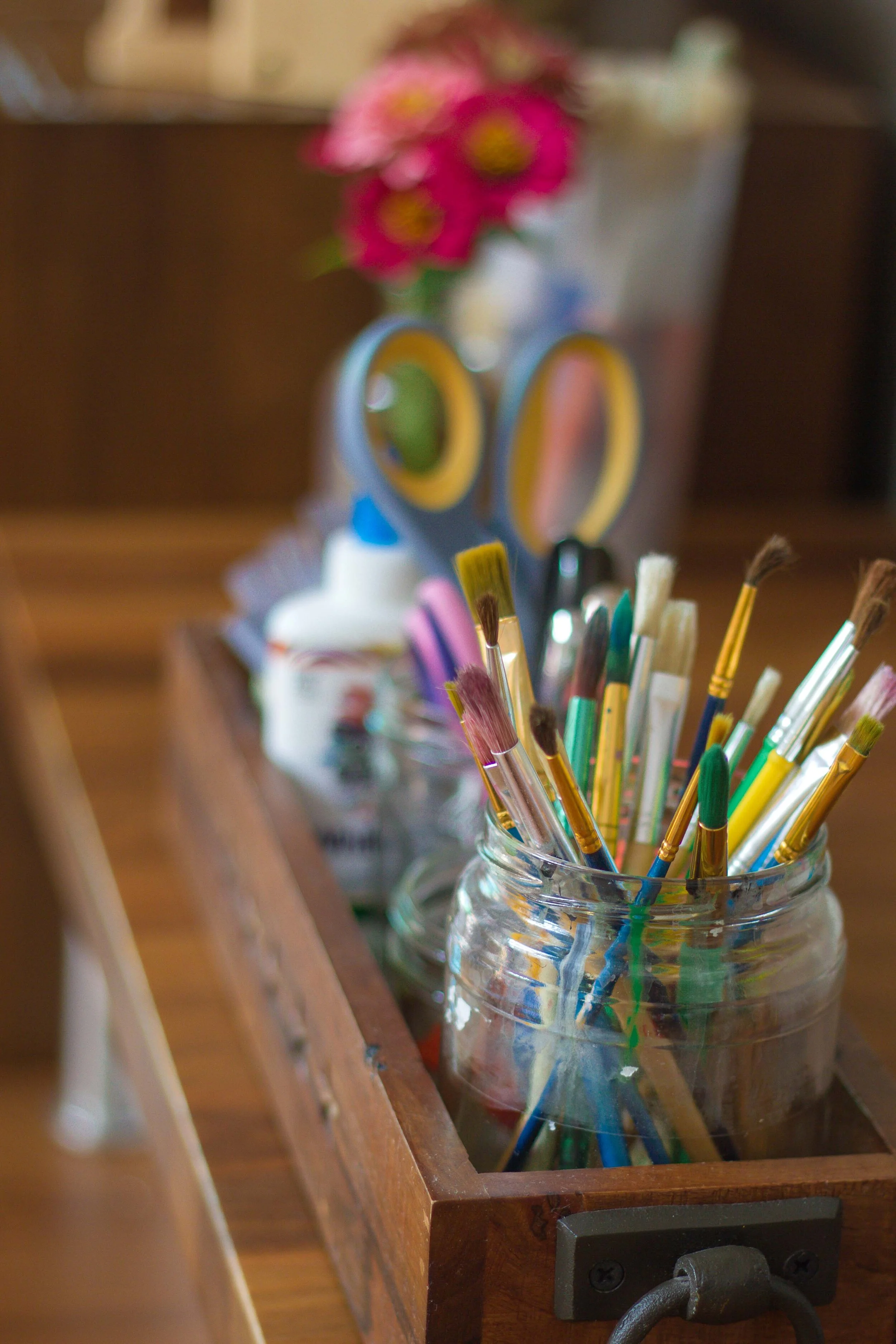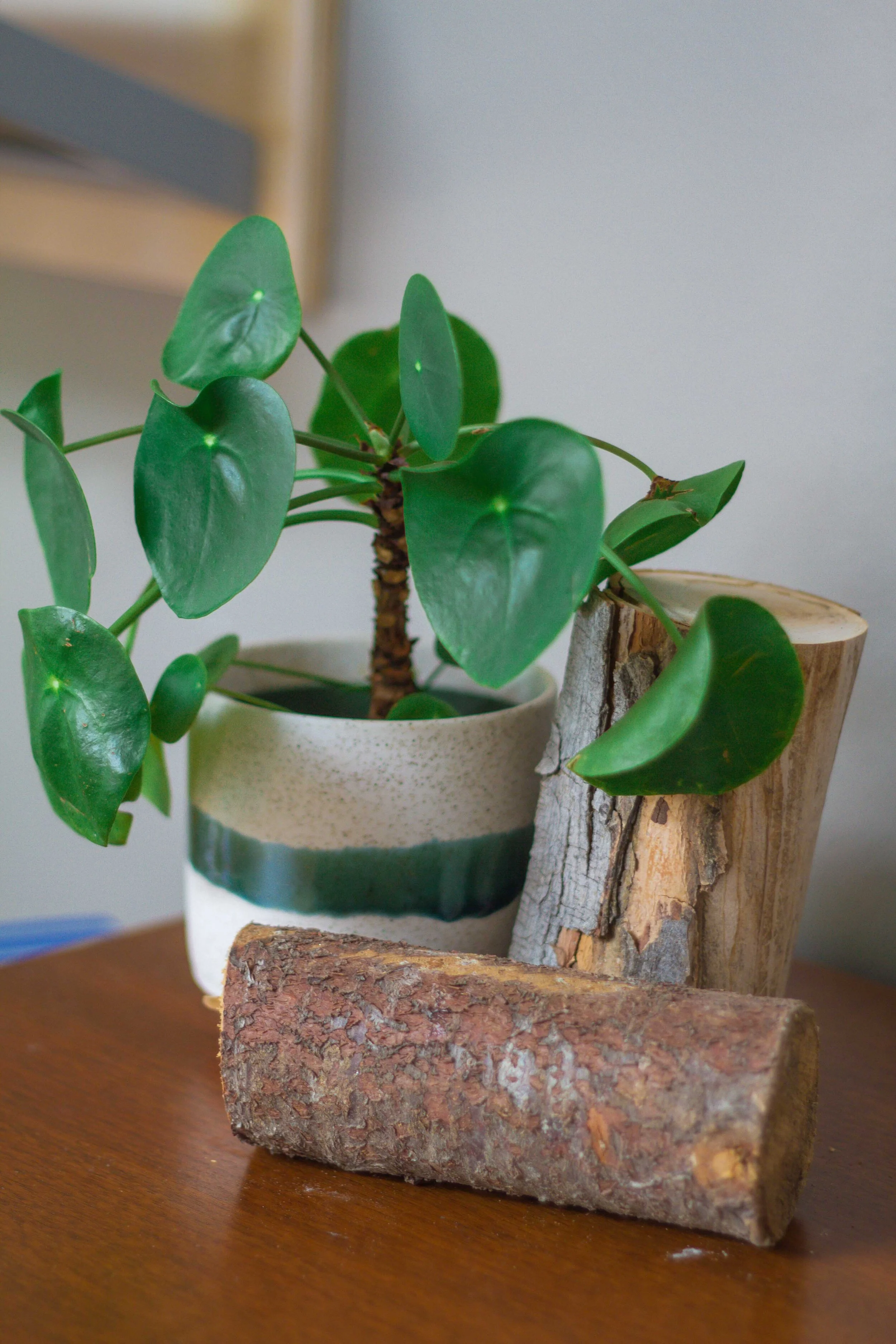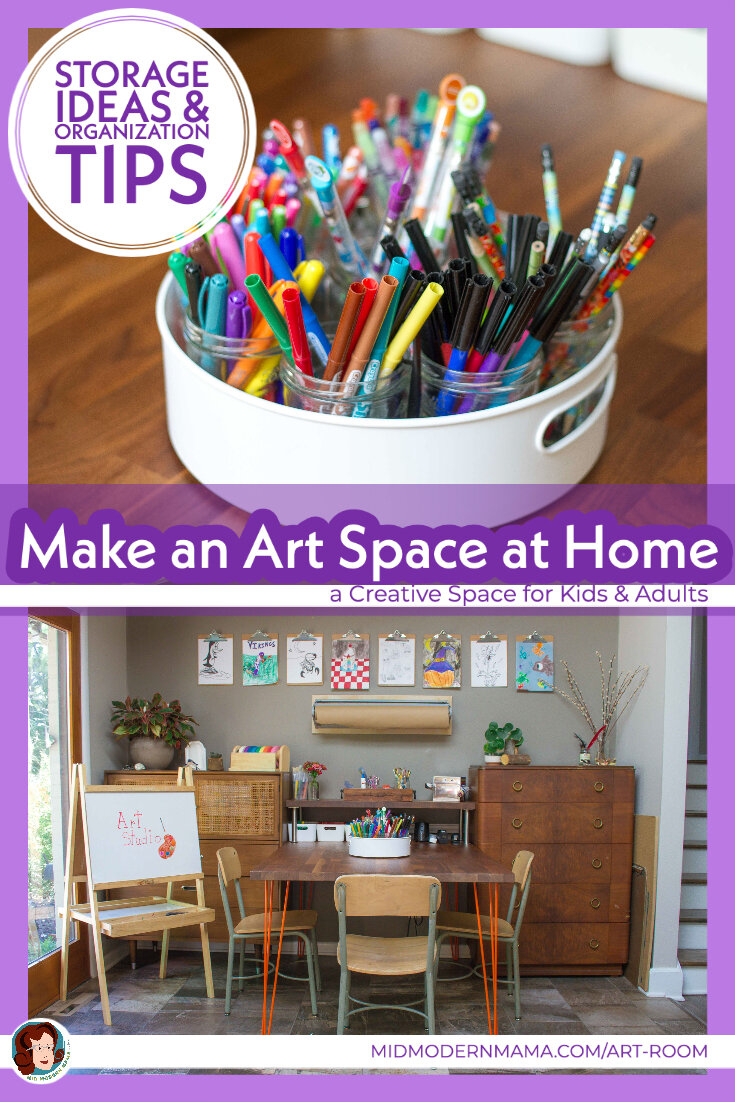Create a Home Art Studio
Set aside a place for kids & adults to get creative
The Art Room is one of our favorite rooms in the house. It sounds decadent, but it isn’t. It’s very practical for our creative family, and it is probably the most-used room in the house. We haven’t always had an art room, but since we started this habit, I can’t imagine not having one!
When we lived in Los Angeles, our house had a very awkward space — too big to be a hallway, too small to be a room. It was just off the kitchen, and we turned it into the Art Room — a place for Bambino to be creative and to make a mess as needed. The Art Room soon became the hub of the house, so when we moved into our current home, a 1958 Atomic Ranch in Colorado, we immediately designated our eat-in kitchen area as the Art Room.
We didn’t need an eat-in kitchen with a dining room just steps away. And the proximity to the kitchen means the Art Room has an accessible sink and trash and recycling. So once again our home’s hub is one of our creative spaces — a place where every day drawing, collage, painting, building, and making all happen.
Our first Art Room combined both play and creative work. Our current Studio is focused completely on art as Bambino is older.
As you think about setting up an art room in your house, here are a few key things to consider:
Location
If your art space is for children and teens, make it central to the house if possible. It’s a great place for kids to play while you work, and they always come to be where the action is — so make their creative space part of the main living area. For our home this means we gave up our breakfast room which was not a big sacrifice. The dining room is just steps away, and who needs two eating areas anyway?
Storage
Whether you use built-in storage or some kind of furniture, you will need storage for art supplies and finished projects. I found two dressers on the Facebook Marketplace which make great storage for all of our supplies and materials. Since our Art Room is central to our house, it is also helpful that almost everything can be hidden away as needed — when we are entertaining, for example.
Natural Elements
Don’t clutter your space. Keep it simple. And then change out the natural elements seasonally or as inspiration strikes. This is one of the main principles of the Reggio Emilio approach — Italy’s arts-infused educational philosophy. Surrounding artists of any age with just a few carefully-chosen natural elements is both soothing and inspiring.
Organization
Art supplies can get cluttered and unruly if they aren’t tamed. Keep them neatly organized. I keep glass jars from jams and sauces which are great for holding pens and pencils, markers and scissors. Inside the storage drawers, silverware organizers hold other tools while all of the materials are sorted by type and are organized KonMari-style using empty cardboard boxes as dividers within the drawers.
Supplies
Buy the good supplies. Lots of people think that children don’t need good art supplies, but if they are taught to take care of what they have, they learn to appreciate the good stuff and grow into better artists. Buy the watercolor paper, for example. Watercolors don’t soak into other kinds of paper as well, so the end product isn’t as detailed or nuanced. And kids know the difference. All artists do. Buy yourself good materials, too!
When I redid my own Workroom, I wrote about organizing art materials and other crafting supplies. There are lots of organizational ideas here:
Display Space
Create a curated spot to display current work. We have a series of clipboards where Bambino — and anyone else — can show their most recent creations. The tops of the two dressers are reserved for three-dimensional work, too. As new work emerges, older pieces are retired, so the display space is constantly changing and evolving.
Lighting
Good lighting is so important for great art! If possible, choose a space in your house with good natural lighting. We have both skylights and a glass door lending natural light to our Art Room. Consider also overhead, task, and spot lighting as you plan your studio space.
Work Surface
Our work table looks lovely when it is clean, but it is an IKEA countertop on hairpin legs. I don’t care if paint or marker or clay or anything else marks up the top. Having to be careful can stifle innovation, so look for a table that isn’t precious. Put in something that can take the dings of a creative day. And perhaps invest in a washable covering, too. We have an oil cloth tablecloth which is perfect for messy projects. It comes clean easily and can be used on the table or on the floor.
As you create your own art room whether it is an art studio, maker space, or multipurpose room, I wish you all the best. Happy creating!
Another creative space in our house: My Workroom! Check it out:

